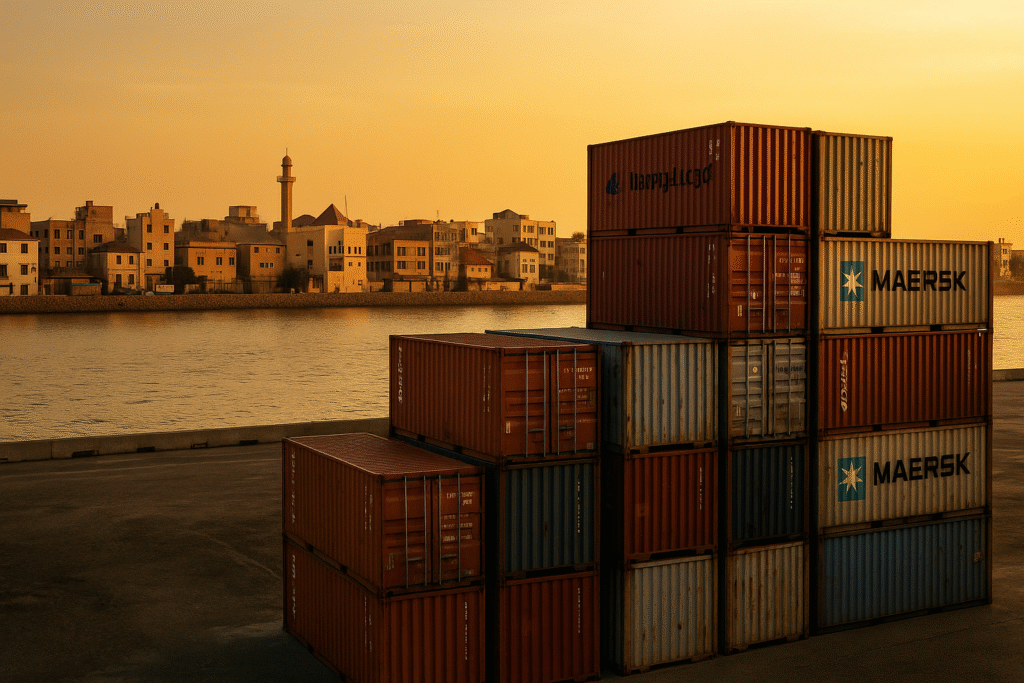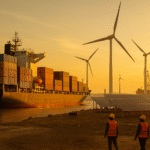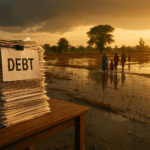Aujourd'hui, je participe à l'ouverture du Sommet africain sur le climat à Addis-Abeba, en Éthiopie, et une question est déjà au centre de mes réflexions : le financement de la lutte contre le changement climatique en Afrique est bloqué en mode dette.
À chaque COP ou sommet mondial sur le climat, des promesses de dons se chiffrant en milliards, et désormais en milliers de milliards, sont annoncées. Pourtant, lorsque les financements arrivent enfin en Afrique, ils répondent rarement aux besoins réels du continent. Au lieu de subventions prévisibles et accessibles, notamment pour l'adaptation, ce sont le plus souvent des prêts, parfois concessionnels, souvent complexes, mais toujours remboursables, qui affluent.
Pour un continent déjà aux prises avec un endettement croissant, il ne s’agit pas seulement d’un mécanisme de financement ; il s’agit d’une injustice structurelle qui limite la capacité de l’Afrique à s’adapter et à effectuer sa transition.
L'adaptation arrive sous forme de dette
Le Les chiffres 2025 du FMI sont révélateurs. En 2024, 47% de financement climatique en Afrique ont été consacrés à l’adaptation, mais 57% de ce financement d’adaptation sont arrivés sous forme de prêts, en grande partie des prêts concessionnels.
L'adaptation consiste à renforcer la résilience : défenses contre les inondations, cultures résistantes à la sécheresse, protection côtière et systèmes d'alerte précoce. Ces projets ne génèrent pas de revenus immédiats. Ils préservent des vies et des moyens de subsistance. Et pourtant, l'Afrique est appelée à les financer par l'endettement.
Même les prêts concessionnels, bien que moins coûteux, aggravent des ratios dette/PIB déjà fragiles. Pour des pays comme la Zambie ou le Ghana, les prêts d'adaptation sont politiquement et budgétairement insoutenables.
Cette contradiction est flagrante : le financement même censé réduire la vulnérabilité aggrave la fragilité budgétaire.
La dette ronge le budget climatique
La compression budgétaire est visible partout. Selon Brookings, L’Afrique a payé 14,4 milliards de livres sterling (163 milliards de livres sterling) au titre du service de la dette en 2024, soit près de trois fois plus qu’en 2010.
Cet argent aurait pu être investi dans des projets d'énergie propre, de nouvelles infrastructures d'adaptation ou des filets de sécurité sociale. Au lieu de cela, il a été versé aux créanciers.
Pour moi, il ne s'agit pas seulement d'une statistique macroéconomique. C'est une question personnelle. Chaque dollar dépensé par l'Afrique pour le service de la dette est un dollar non dépensé pour électrifier les écoles rurales du Nigeria, alimenter les hôpitaux du Kenya ou restaurer les terres agricoles du Malawi. La dette étouffe littéralement le budget climatique de l'Afrique.
Nous avons exploré cela en détail dans notre blog précédent sur La crise du financement climatique en Afrique, et la crise n’a fait que s’aggraver.
La COP29 n’a pas résolu le problème du déficit de subventions
Lors de la COP29, les négociateurs ont salué l'accord sur un nouvel objectif mondial de financement climatique : 1 400 milliards de livres sterling par an d'ici 2035. À première vue, c'était historique. Mais en examinant attentivement les chiffres, je n'ai pas pu partager les réjouissances.
De cela $1,3 billion, seulement $300 milliards devrait provenir de sources publiques. Le reste sera “ mobilisé ” auprès de capitaux privés.
Le programme reste largement axé sur les prêts, le secteur privé et les subventions. Pour les négociateurs africains et la société civile, le verdict était sans appel : l’injustice fondamentale du financement climatique n’avait pas été corrigée.
Au sommet, j’entends la même inquiétude répétée dans les couloirs et lors des événements parallèles : Sans objectifs de subventions applicables, le “ déficit de subventions ” persistera.
Le coût du capital et le risque de change
Même lorsque les capitaux circulent, leur prix est injuste. Agence internationale de l'énergie (2024) ont constaté que le coût du capital en Afrique est deux à trois fois plus élevé que dans les pays de l’OCDE.
Cela signifie qu'un parc solaire au Kenya coûte nettement plus cher à financer qu'un projet équivalent en Allemagne ou au Japon. Si l'on ajoute à cela le risque de change, les prêts libellés en dollars ou en euros, remboursés en monnaies locales sujettes à la dépréciation, le problème s'amplifie. Les tarifs augmentent, les services publics s'effondrent et les projets stagnent.
C'est pourquoi j'ai toujours plaidé en faveur des prêts en monnaie locale, des garanties et des mécanismes de couverture du risque de change. Ce ne sont pas des options. Ce sont des outils essentiels pour permettre aux Africains d'accéder à des énergies renouvelables abordables. Sans eux, la transition restera trop coûteuse.
Les subventions existent, mais sont hors de portée
Même lorsque des subventions existent, elles sont terriblement lentes et bureaucratiques. Fonds vert pour le climat (GCF) est l’instrument phare, mais les institutions africaines attendent souvent des années avant d’être accréditées et approuvées.
Les organisations locales sont confrontées aux obstacles les plus importants, tandis que les intermédiaires internationaux perçoivent des frais administratifs. L'Unité d'évaluation indépendante du FVC (2024) a admis : “ Les plus vulnérables sont confrontés aux obstacles d’accès les plus difficiles. ”
J'ai vu ce scénario se produire. Les communautés touchées par les inondations ou la sécheresse ne peuvent pas attendre des cycles d'approbation pluriannuels. Lorsque l'argent arrive, les dégâts sont déjà aggravés.
Aide en baisse, subventions en baisse
Une autre tendance inquiétante est que l’aide publique au développement (APD), l’une des principales sources de financement sous forme de subventions, devrait à nouveau diminuer en 2025 (OCDE).
Ce déclin se heurte à des besoins croissants. La facture d'adaptation climatique de l'Afrique s'alourdit, tandis que les subventions se réduisent. Conséquence : un déficit de financement de l'adaptation se creuse, alors même que les communautés ont besoin d'un soutien accru.
Ce qui doit changer
De mon point de vue à ce sommet, la voie à suivre nécessite trois changements urgents :
- Adaptation par subvention en premier et perte et dommage. Les prêts peuvent jouer un rôle dans les projets d'atténuation présentant un potentiel de revenus. Cependant, l'adaptation, les pertes et les dommages doivent être financés par des subventions. Toute autre solution est inéquitable.
- Dérisquer sans s'endetter. Les garanties, les prêts en monnaie locale et la couverture de change doivent devenir la norme en Afrique. Elles réduisent les risques sans alourdir les charges de remboursement. Notre précédent article de blogue sur Systèmes énergétiques zombies a montré comment de nouveaux financements peuvent être gaspillés si ces risques sont ignorés.
- Allégement de la dette verte. Les échanges de dettes contre des mesures climatiques et les clauses climatiques dans les obligations souveraines peuvent alléger la pression budgétaire tout en liant les remboursements à la résilience climatique.
Il ne s'agit pas d'exigences radicales, mais de mesures pragmatiques visant à rendre la finance crédible et équitable.
Mon message à la COP30
À l’approche de la COP30, mon message est clair : l’Afrique n’a pas besoin de plus de prêts.
Nous avons besoin de financements d'adaptation axés sur les subventions, d'outils accessibles de partage des risques et d'un accès plus rapide et plus équitable aux fonds. Sans cela, la transition énergétique restera bloquée par l'endettement et des millions d'Africains resteront vulnérables aux chocs climatiques.
Le système mondial de financement climatique n'a pas été conçu pour l'Afrique. C'est pourquoi il doit être repensé en tenant compte des réalités africaines.
L'essentiel
Je suis arrivé à ce sommet avec espoir, mais aussi avec une certaine lucidité. La vérité est inéluctable :
- L’adaptation arrive sous forme de dette.
- Le service de la dette ronge l’espace budgétaire.
- Les engagements de la COP restent lourds en prêts.
- Le coût du capital est trop élevé.
- Les subventions sont lentes et rares.
- Le bassin de subventions diminue.
Pourtant, des solutions existent : l’adaptation par le biais de subventions, la réduction des risques sans dette et l’allègement de la dette verte.
L'Afrique ne peut pas continuer à s'adapter aux promesses ni à assurer sa transition grâce à des prêts. Pour que l'avenir énergétique du continent soit juste et durable, il est nécessaire de repenser le financement.
“Nous ne nous adapterons pas aux promesses. Nous ne ferons pas la transition sur la dette. L'Afrique a besoin de financements prioritaires, basés sur les subventions, et ce, dès maintenant.”
Suivre Transition énergétique en Afrique pour plus de mises à jour :
![]()
![]()
Vincent Egoro est une voix africaine de premier plan en matière de transition énergétique juste, d'élimination progressive des combustibles fossiles et de gouvernance des minéraux critiques. Fort de plus de dix ans d'expérience en plaidoyer régional, il œuvre à l'intersection de la transparence, de la responsabilité et de la durabilité, promouvant des solutions communautaires qui placent l'Afrique au cœur de l'action climatique mondiale.




Pingback: Baisse des revenus des combustibles fossiles : qui paie la transition de l'Afrique ? - Energy Transition Africa Qui paie la transition de l'Afrique alors que les revenus des combustibles fossiles diminuent ?